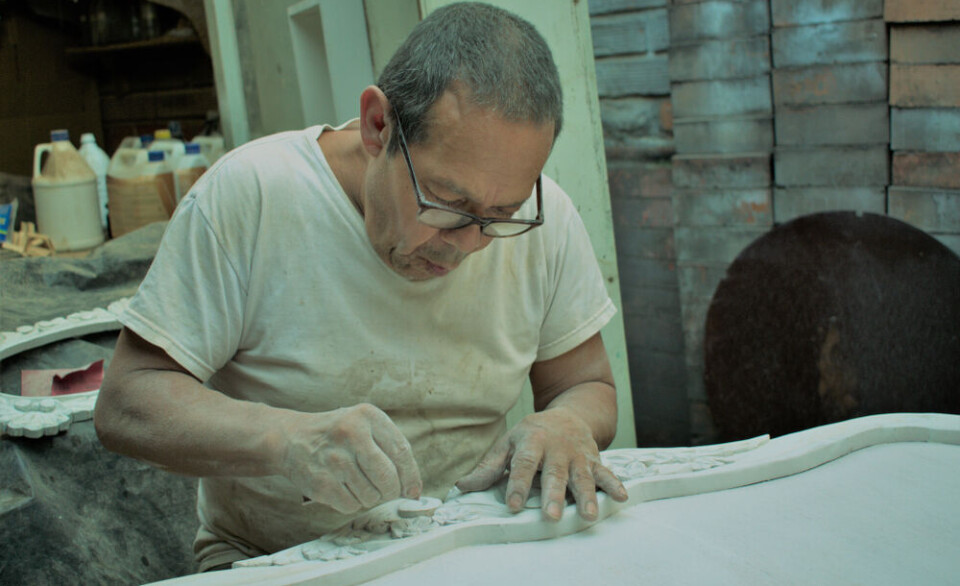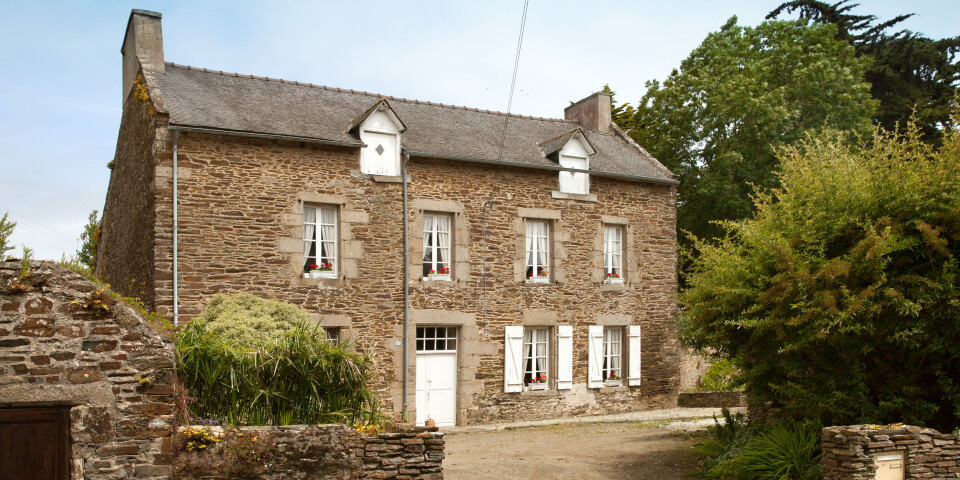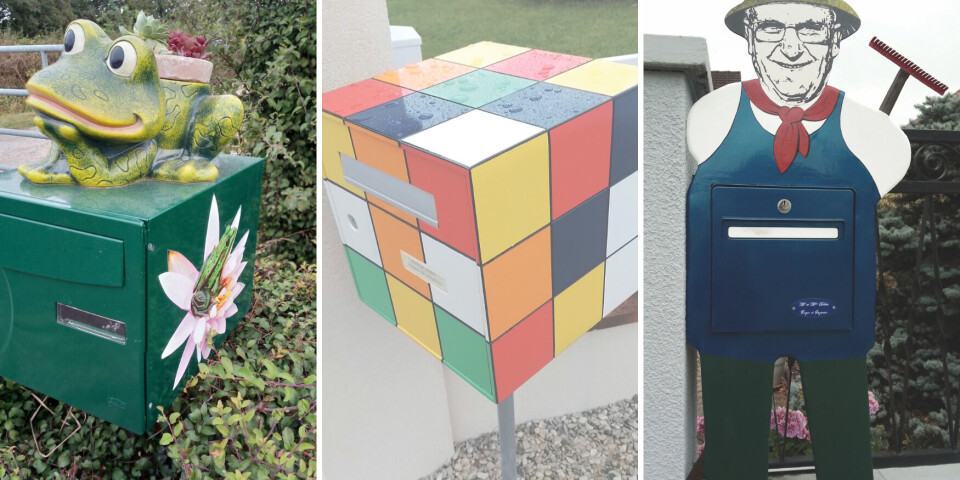-
Eat like a local - Dragées de Verdun
Explore the rich history and craftsmanship of Maison Braquier, the last French company producing traditional sugared almonds, a beloved delicacy in Verdun since 1783
-
Slake your thirst at Verdun's beer museum
Explore Verdun's beer museum, plus enjoy a unique dining experience
-
French cheese production adapts to climate change
Producers are asking for a temporary relaxation of AOC rules
'My father taught me it is important to seek perfection'
Connexion's Jane Hanks meets 30-year-old Jauffrey Mauvigney, a prize-winning charcutier-traiteur who works in his family’s shop at Mérignac, near Bordeaux

You are a third-generation charcutier-traiteur. What made you decide to follow in your grandfather and father’s footsteps?
My family influenced me but what made me decide to join the profession is my passion for this career. I love the happiness we give to clients when we serve them the best in charcuterie.
We never do the same thing twice. In the morning I can be working on charcuterie, but then in the afternoon it could be fish or savoury or sweet patisseries.
The advantage of being a charcutier- traiteur is that we do many things. My first skill is in charcuterie but I have also been taught the basics for other methods of cooking such as making pastries.
What is the difference between a charcutier and a charcutier-traiteur?
The pure charcutier only prepares and sells his charcuterie. He may add a carrot salad, but that is all.
If you are a traiteur as well, you will also make ready-made meals for the client.
There are traiteurs who work in events and those, like me, who work in shops and prepare meals to order for clients who come to collect them.
And what is the difference between a charcutier and a butcher?
The butcher takes out the bones, removes the fat and nerves and cuts up a carcass, but will only do a little basic cooking on some of the meat, such as roasting. The name charcutier comes from chair cuite, meaning cooked meat.
Around 80% of a charcutier’s work is with pork and the charcutier will take the carcass, cut it up and debone it, then season the meat, with salt and pepper, but also with other spices, such as cumin and curry, and aromatic herbs and then cook it, perhaps to make a pâté by mixing it with cream and eggs and cooking it for four or five hours.
What are the different types of charcuterie?
There must be at least 900 different types including ham, rillettes, sausage, saucisson, black and white boudin.
There are an infinite number of different pâtés – country pâté, duck with olives, chestnut pâté... Not all are made with pork. For example, there’s chicken with lemon or with Espelette pepper. Each region has its own products. In the Médoc, we have the Grenier Médocain, made from pork stomach.
In other regions there is the Grillon Charentais [similar to rillette] and the Tourte de Lorraine [a pie with meat marinated in white wine]. Charcuterie was born in the countryside when our grandparents and great grandparents owned their own pig to provide them with meat for much of the year.
They had to find ways of cooking the meat to preserve it for a long time and invented different methods to use each part of the animal.
I promise you, you can eat absolutely everything in a pig, other than its teeth. From those first recipes, charcuterie has continued to develop and become better and better.
What does your new generation bring to charcuterie?
We have a lot of energy and enthusiasm not to revolutionise the profession but to do things a little differently, for example to reduce the amount of sodium nitrate which has been traditionally used as a preservative, but which we now know to be carcinogenic.
We are lucky to have lots of opportunities to be creative.
Pâtés always used to be made in rectangular and square dishes, now we have moulds of all shapes and sizes.
We now add ingredients no-one would have used before – for example, orange zest in a white boudin or change the way we mince the meat for a pâté. There are lots of competitions which allow us to excel in our profession, meet other charcutiers and learn from them.
Recently, there was the Grand Prix de France de la Charcuterie where 19 candidates each had half a pig in front of them out of which they had to produce nine different products.
At the end of the competition there were nine different dishes prepared in 19 different ways, showing the range and creativity of charcutiers today.
You too have entered and won competitions, the most prestigious earning you the title of Meilleur Ouvrier de France in 2015, following in the footsteps of your father who won it 29 years earlier. Is this an important title for you?
The title does not mean we are the best in France, because there are plenty of other charcutiers who are just as good – but who have not wished to enter such a competition.
What we want to do via the competitions – and here I speak on behalf of my father who is President of the Confédération Nationale des Charcutiers-Traiteurs – is to encourage charcutiers to make their products themselves because, unfortunately, there are some who buy in and sell on ready prepared products.
There is nothing better than homemade charcuterie made in each shop. “There is nothing better than home-made charcuterie made in each shop Jauffrey Mauvigney
My father has created the third most-important charcuterie competition in the world, the International Catering Cup which takes place every two years in Lyon.
The next should have been this month, but it has been held over to May or June because of Covid.
We have competitors from Brazil, Belgium, Vietnam, Spain, Japan and other countries, but we have never had anyone from the UK, and we would love to see a British team take part if any of your readers are interested or know someone who might be.
Does the French public eat as much charcuterie as before? We hear a lot about the dangers to health of eating too much?
We are very sensitive to these issues, which is why, as I said before, we try to reduce the use of sodium nitrate and salt for example.
I have been brought up eating charcuterie, it is part of my culture and I eat some nearly every day. You should not eat too much, but there is nothing more convivial than a gathering of friends and family sharing a good bottle of red wine and plateau of charcuterie.
If you are brought up like this it is in your genes and in our shop, we still have plenty of customers. Good quality charcuterie is still very popular.
Is the well-being of the animal important for you?
It has always been important and even more so today. An animal which has been well looked after will produce a much better meat.
I love animals. Just because I have chosen this profession, does not mean I am a killer. I know you can eat nowadays without including meat, but I don’t understand that. It is not for me. But I do think the well-being of the animal is vital.
What dishes do you like the most?
I have classic tastes. I adore white and black boudin, pâté de campagne and ham, but a good fish pâté en croûte is also very good. Fiddly to make, but delicious.
I do not have any preferences over what I make. If I am working in charcuterie with pork I am happy. There will always be something new to learn, right up to retirement.
My father taught me it is important to seek perfection.
The client is always looking for that little extra detail to make what they buy special, and that is why they come to us.
























